I’m on the west coast of Morocco in a tiny village outside Essouira watching 30-40 local Berber women crack argan oil kernels with little rocks and nimble fingers onto big slabs of stone. The sound of tick-tick-tack-tack fills the air above the low murmur of chitter chatter. I’m with Weleda UK, the health and beauty brand that sources its fairtrade and organic argan oil from this women’s cooperative.
These Berber women have been shelling argan for generations but now they’re being paid a better wage with good working conditions and even family benefits. They kindly let us film and photograph this fascinating process, which was a very special experience so I’m really pleased to be able to share it with you.
Most people have heard about argan oil – one of the biggest buzz words in beauty and haircare in recent years – but what you may not know is how labour intensive the journey is to get this prized argan fruit from seed to skin and what a superfood it is for skin and health.
My trip involved seeing the wild argan tree forests, the local Berber women at work, as well as the creche and kindergarten that looks after and educates their kids while they work, the filtration and production process and of course, sampling the finished argan oil products – both culinary and cosmetic.
Here I share the top three things you should know about argan oil and beauty as well as a few magical highlights from the Weleda trip.
1. Argan trees are precious property but in decline
The argan tree is an ancient species, thought to date back millions of years in this south-west region of Morocco. They survive dry and windy conditions in the semi-desert like terrain with their scruffy, rather rugged looking appearance but apparently it’s their long root systems that travel far through the soil and limestone that help seek out water, anchor them firmly into the ground and even keep the desert at bay. With gnarly branches, these trees are viciously thorny so don’t get too close. Only goats are unperturbed so it’s a striking sight to see them at the top of an argan tree, nibbling the fruit.
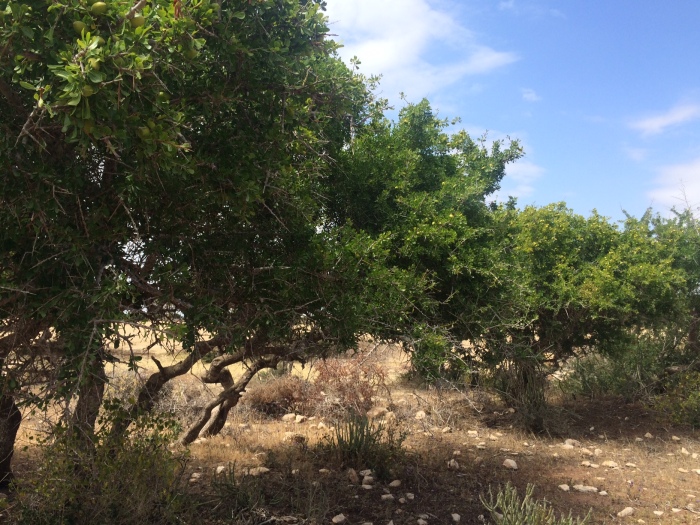
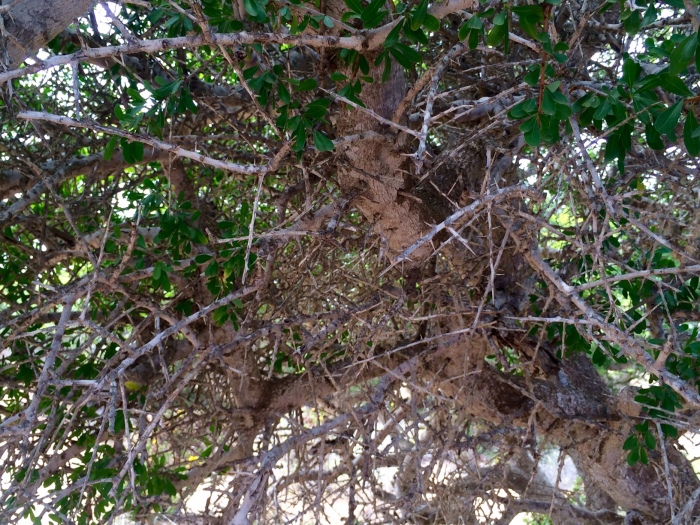
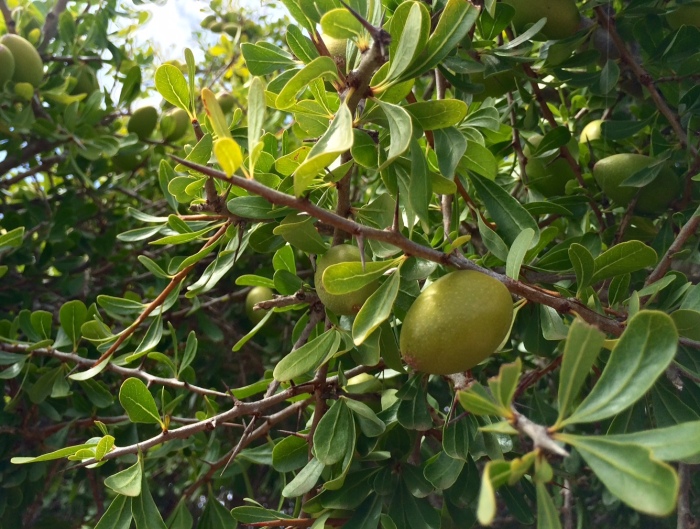
We took a brilliant ecological walking trip across the coast and our guide described the decline of argan trees over the last 100 years. At the turn of the 20th century Morocco had around 2 million hectares of argan trees but during the 1970s and 80s, there was drastic depletion due to a number of reasons: trees were felled to make way for fruit farming; chopped down for wood, destroyed through fires, or over-grazing by goats and camels. Considered to be the gold of Morocco, this region is now Unesco protected.
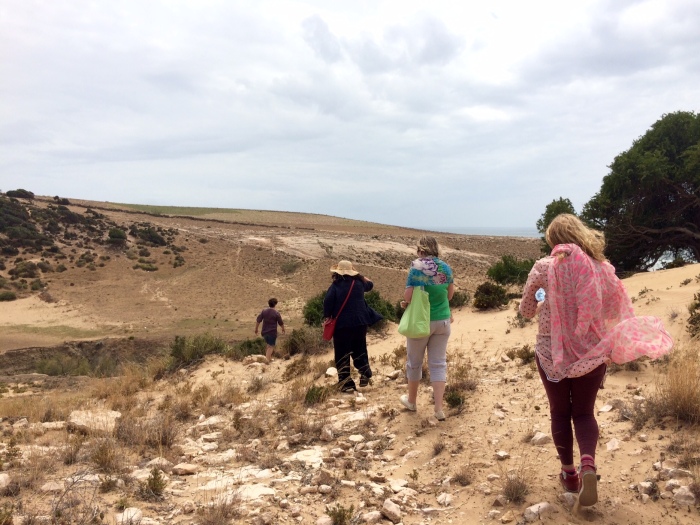
2. Producing argan oil is a long and labour intensive process
Extracting argan oil is time and labour intensive, which is why sourcing fairtrade is important. With the rise in worldwide demand for the ingredient, it’s easy for large cooperations to overlook the man (correction: woman) hours it takes to produce and bring prices down, which only really serves the end multinational while the Berber women who do the work are likely to get a raw deal.
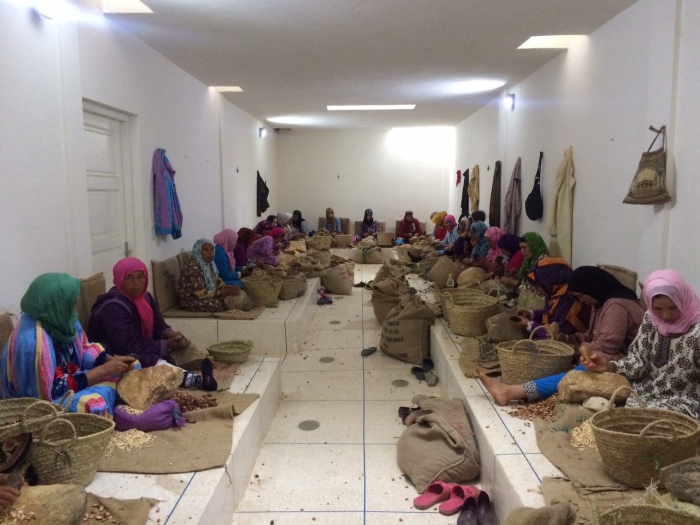
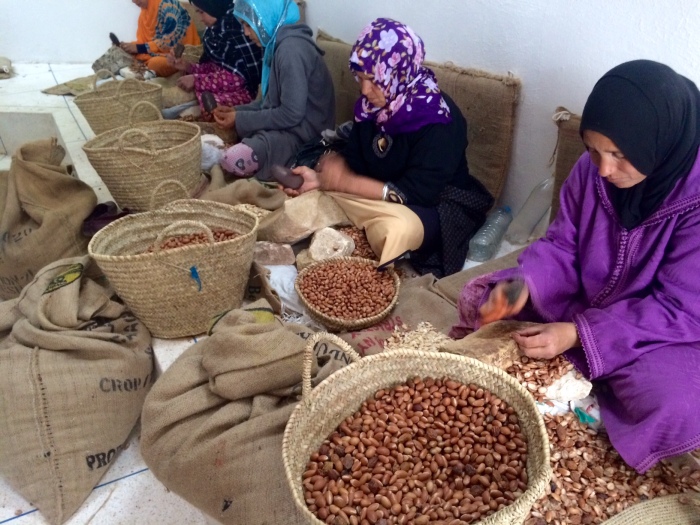
That’s why the Sidi Yassine cooperative is so special. Ulysses Müller is the founder and owner of the cooperative which Weleda UK sources its 100% natural, fairtrade and organic argan oil from. Ulysses, of Swiss origin, set up the company 12 years ago with his Moroccan wife to create a product with high, international quality under fairtrade and organic principles. Sidi Yassine is still the only producer in the region with these credentials.
I’ve always been interested in the provenance of ingredients so getting to actually meet the women behind our moisturisers was amazing.
Weleda is a brand that’s always been committed to putting people before profits and operating sustainably in harmony with nature and people – that’s why the partnership with this women’s cooperative works so well.
Sidi Yassine provides jobs to around 700 people, 99% of whom are Berber women and among the poorest in Morocco. The positive effect has been empowering these women with a better wage and respect for their work.
It takes around 15 hours of labour to produce 2-2.5kgs of kernels for one litre of oil. After the fruit has fallen from the tree and then picked from the ground and once sun-dried, the wrinkly outer skin of the fruit is removed using a simple purpose-built machine, and the hard inner nut is then broken by tapping manually between a large stone and smaller one; these stones are usually the women’s own and handed to them through the family.
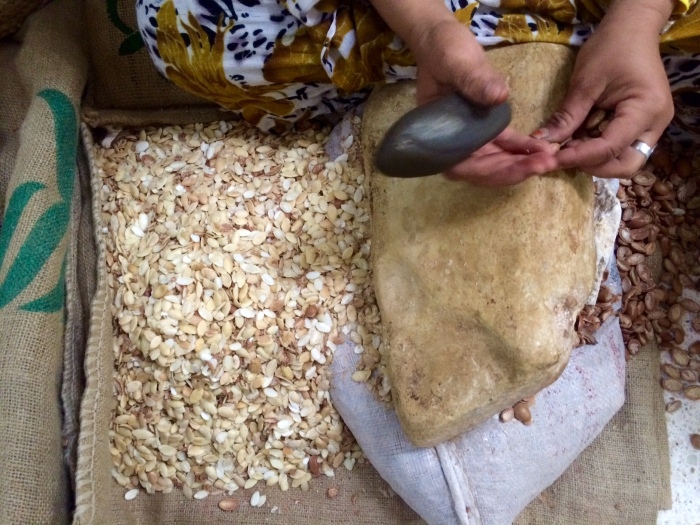

The argan fruit is green and fleshy, similar to an olive but a bit larger and inside there’s a large nut containing one to three oil-rich seeds or kernels – the gold! Nothing goes to waste in this process as the soft outer skins are used as animal feed and the hard nutshells are used as bio-fuel. Sustainability at its best.

3. Argan is a super superfood
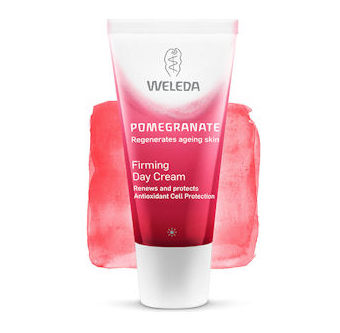
Argan has been used for centuries in Morocco as a beauty oil; a staple for Berber women to treat skin conditions and now the key ingredient in the Weleda Pomegranate range, which helps to nourish and firm older skins.
The Sidi Yassine argan oil can be found in Pomegranate Firming Eye Cream, Pomegranate Firming Day Cream and Pomegranate Firming Night Cream – must-have products for 40+ skins.
Argan oil that goes into beauty products is cold-pressed and not treated with heat at all, in order to retain its vitamins and nutrients.
Hailed as a wonder ingredient for health too, it’s been used to treat rheumatism and heart disease by locals in the past. We now know it’s rich in fatty acids and contains around 80% unsaturated fat as well as vitamin E. Some say it contains 80 times more free radicals and antioxidants than olive oil while studies have shown it can protect connective tissue, lower bad cholesterol and restore skin’s protective lipid barrier.

For culinary use, the argan seeds are lightly toasted at around 60 degrees which brings out the oil’s distinctive and delicious nutty flavour, not dissimilar to a walnut or hazelnut oil. It’s not, however, suitable for cooking as it can’t withstand heat so use it as a finishing drizzle over cooked food, salad or use for bread dipping in the same way as olive oil. If you’re a fan of nut butters then the local delicacy Amlou is a must – a mixture of almonds, honey and argan oil for use as a spread or dip with fresh bread. It’s simply divine!

Argan is becoming more readily available in the UK and Europe so look out for Arganic oil at M&S stores. And of course the Weleda Pomegranate skincare range powered with argan oil.
What an amazing journey! Thanks for sharing the background :)
LikeLiked by 1 person
Great post ;)
Sabrina 🌹🌞🌻
http://www.OrganicIsBeautiful.com
LikeLiked by 1 person
neat
LikeLiked by 1 person